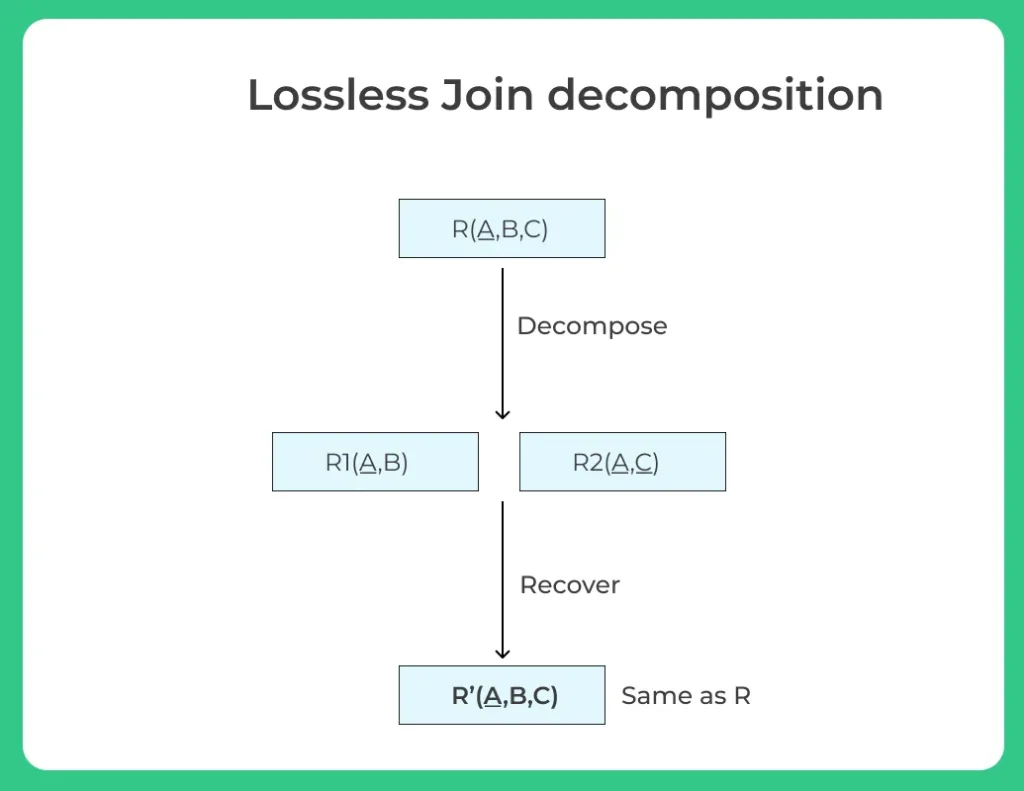Lossless Join Decomposition in DBMS

What is a Join?
Joins in Database Management System are used to retrieve data from multiple tables. Data can be extracted based on multiple conditions which maybe applied while retrieving the information.
In this article , we will learn about Lossless Decomposition in DBMS.
Lossless join decomposition
There are two possibilities when a relation R is decomposed into R1 and R2.They are
- Lossy decomposition i.e., R1⋈R2⊃R
- Lossless decomposition i.e., R1⋈R2=R
For a decomposition to be lossless, it should hold the following conditions :
- Union of attributes of R1 and R2 must be equal to attribute R. each attribute of R must be either in R1 or in R2 i.e., Att(R1) ⋃ Att(R2) = Att(R)
- Intersection of attributes of R1 and R2 must not be null i.e., Att(R1) ⋂ Att(R2) ≠ Ø
- Common attribute must be a key for atleast one relation(R1 or R2) i.e., Att(R1) ⋂ Att(R2) -> Att(R1) or Att(R1) ⋂ Att(R2)->Att(R2)
Example
A relation R(A,B,C,D) with FD set {A->BC} is decomposed into R1(ABC) and R2(AD). This is lossless join decomposition because
- First rule holds true as Att(R1) ⋃ Att(R2)=(ABC) ⋃ (AD)= (ABCD) = Att(R)
- Second rule holds true as Att(R1) ⋂ Att(R2) = (ABC) ⋂ (AD) ≠ Ø
- Third rule holds true as Att(R1) ⋂ Att(R2) = A is a key of R1(ABC) because A->BC is given
Prime Course Trailer
Related Banners
Get PrepInsta Prime & get Access to all 200+ courses offered by PrepInsta in One Subscription
Get over 200+ course One Subscription
Courses like AI/ML, Cloud Computing, Ethical Hacking, C, C++, Java, Python, DSA (All Languages), Competitive Coding (All Languages), TCS, Infosys, Wipro, Amazon, DBMS, SQL and others







Login/Signup to comment